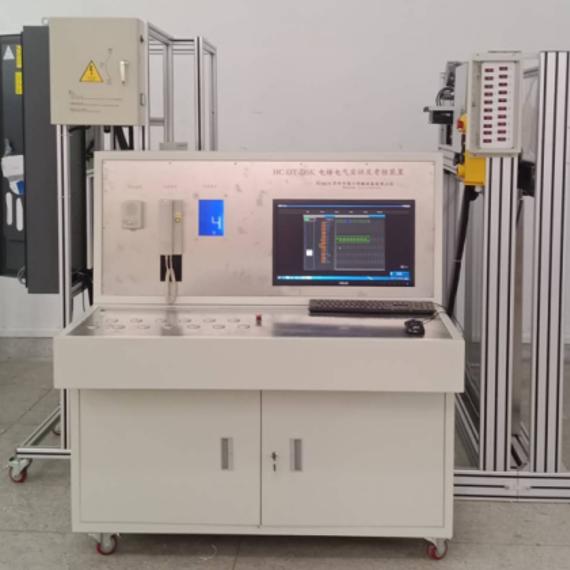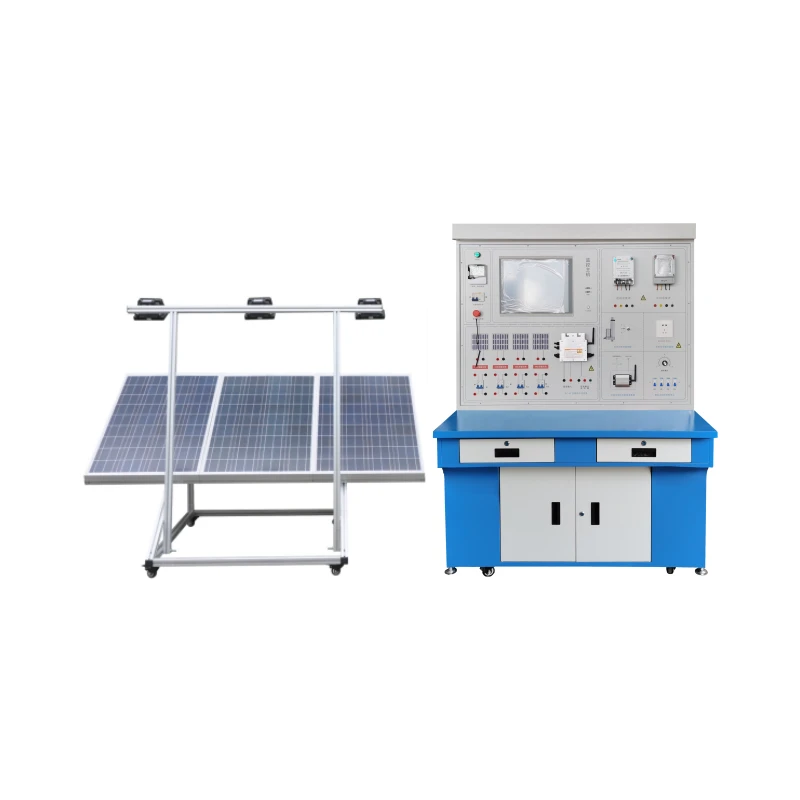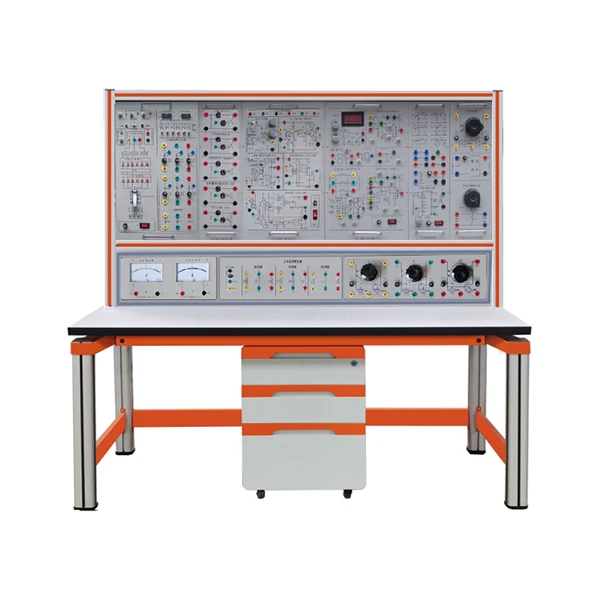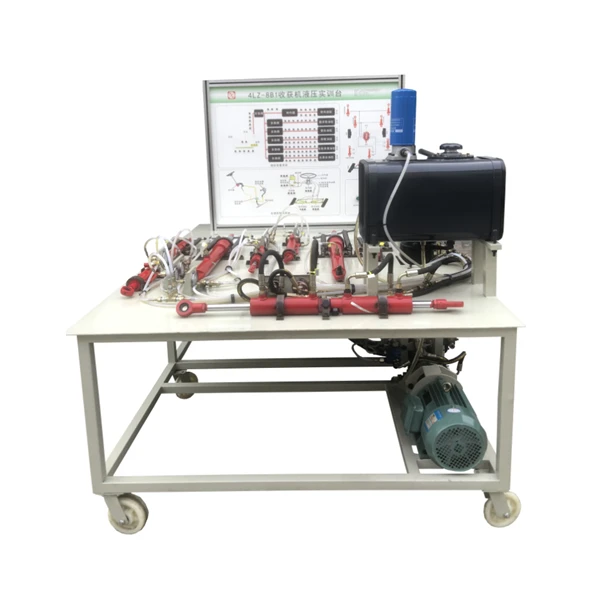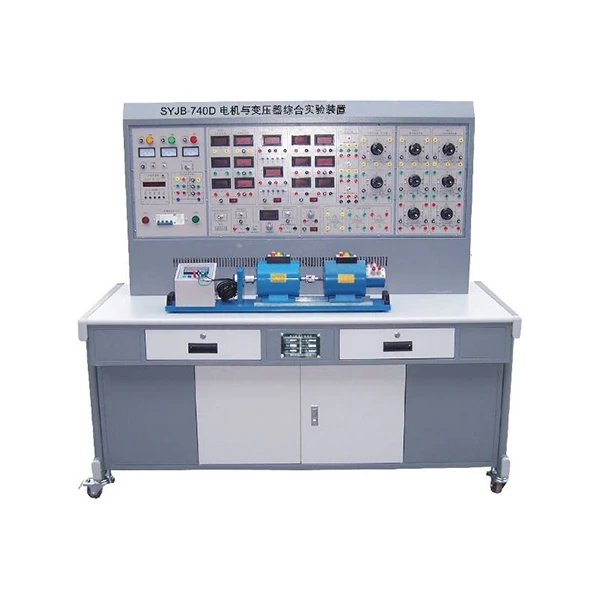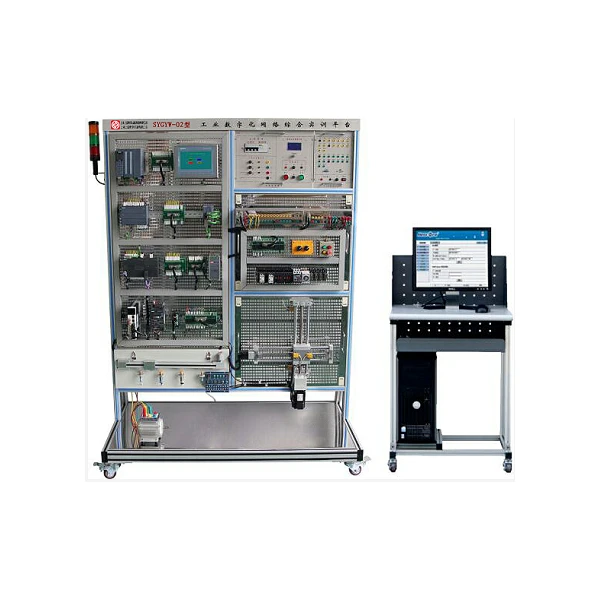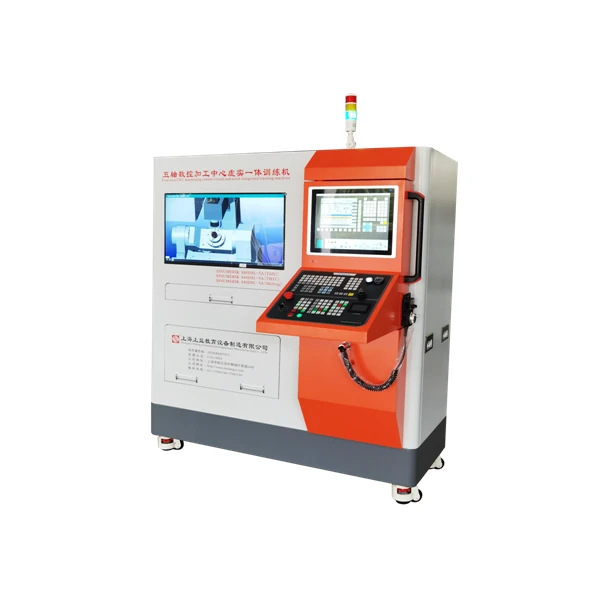SYDTX-02A elevator electrical practical training assessment device
SYDTX-02A
Main technical parameters of the control cabinet
(1) The elevator control cabinet needs to be a real elevator control cabinet;
(2) The control cabinet meets the requirements of national standard GB 7588-2003 "Safety Code for Elevator Manufacturing and Installation";
(3) Working power supply: three-phase five-wire AC380V±7% or single-phase AC220V±4%;
(4) control mode: integrated controller (reference brand: Mornac, New Time, Blue Light);
(5) Rated power: 5.5KW.
Inquiry Now

Descriptions
1.2 Main technical parameters of traction machine
(1) The traction machine is a real elevator traction machine;
(2) The traction machine meets the requirements of national standard GB 7588-2003 "Safety Code for Elevator Manufacturing and Installation";
(3) Rated voltage: AC380V±7% or AC220V±4%;
(4) Traction device: domestic industry mainstream application of permanent magnet synchronous traction machine or asynchronous geared traction machine;
(5) Rated power: not more than 7.5KW;
(6) Rated load: not more than 800Kg;
(7) Rated speed: not more than 1.0m/s.
1.3. Main technical parameters of elevator control cabinet testing and commissioning table
(1) Power supply voltage: AC380V±7% or AC220V±4%.
(2) The floor display in the car adopts 7-inch multimedia LCD.
(3) Control device adopts PLC.
(4) The direction of traction machine operation can be displayed by indicator.
(5) Adopt real elevator car internal selection button and floor call button.
(6) The installation position of desktop computer LCD monitor is reserved.
(7) Test object: domestic industry mainstream application of integrated controller (reference brand: Mornac, new time, blue light)
Control cabinet test bench main functions:
(1) can provide the control cabinet with internal selection and outbound call commands from 1 to 10 floors;
(2) It can provide the control cabinet with simulated shaft information from 1 to 10 floors, and the simulated shaft information can be programmed by software (in which PLC is used for the elevator control cabinet control device);
(3) It can interact with the control cabinet for elevator door opening and closing commands and feedback signals;
(4) It can interact with the control cabinet for signals of overload, full load, locking the elevator, fire fighting, driver, etc;
(5) The incoming power supply voltage is displayed through digital display with wrong phase and phase loss protection;
(6) Control cabinet incoming main power supply is controlled through the detection table, and the main power supply can be easily cut off in case of emergency;
(7) The operation status of the elevator can be monitored through the software of the upper computer.
1.4. Special desktop computer for the upper computer
It can communicate with the control system and view the basic parameter information of the elevator.
1.5. Main technical parameters of "floor car door opener" equipment
Main components: door machine structure frame (including door cover), door machine controller and AC frequency conversion door motor, door machine demonstration device components (including but not limited to main electric wires and cables), etc.
1) working power: single-phase AC220V ±4%, 50Hz;
2) opening size: not more than 800mm;
3) open the door form: in the split double, the door height is not higher than 1200mm;
4) drive control: domestic mainstream brands;
5) dimension: not more than 1600 * 1800 * 500 mm (W * H * D)
6) Adopt the mainstream structure type in China, and completely adopt the real elevator door mechanism and components.
7) The floor door and car door can be separated and adjusted and trained separately, and the combination can be used for linkage training of the hall door and car door.
8)Electrical or mechanical interlocking is adopted to prevent misoperation. Safety signs, signals and displays are clear and easy to identify, preventing safety accidents caused by human misoperation.
1.6. Elevator electrical training and assessment device components
Adopt 1:1 completely real machine room power box, car roof access box, car roof wiring box, pit access box, pit switch box, shaft lighting, machine room lighting, etc. used on the elevator.
1.7. Electrical fault fast setting and recovery system
At the same time to meet the needs of vocational skills identification and competition, "elevator installer" and "elevator maintenance worker" standard requirements, no less than 40 typical elevator electrical fault setting switch.
1.8.Practical training items
★ cognitive practical training on the main components of the elevator electrical system;
★Controller parameter setting;
★Permanent magnet synchronous traction machine pole angle position identification;
Self-learning of elevator shaft parameters;
★Traction motor variable frequency drive control circuit detection and adjustment and fault finding training;
★Traction machine brake mechanical adjustment and fault finding training;
★Fault finding and troubleshooting training for the control circuit of the cabin control box;
★Fault finding and troubleshooting training of the control circuit of the call box outside the hall;
★Fault finding and troubleshooting training of the control circuit of the roof access box;
★Lighting control circuit fault finding and troubleshooting training;
★Communication circuit fault finding and troubleshooting training.
FAQs
Q: What is practical training equipment?
Q: What are the classifications of practical training equipment?
Q: How to choose the suitable practical training equipment?
Q: How to use and manage the practical training equipment?
Q: What are the advantages and functions of the practical training equipment?
Related Products
Inquiry Now
If you have any questions, please leave a message, we will reply as soon as possible.
Send Message


